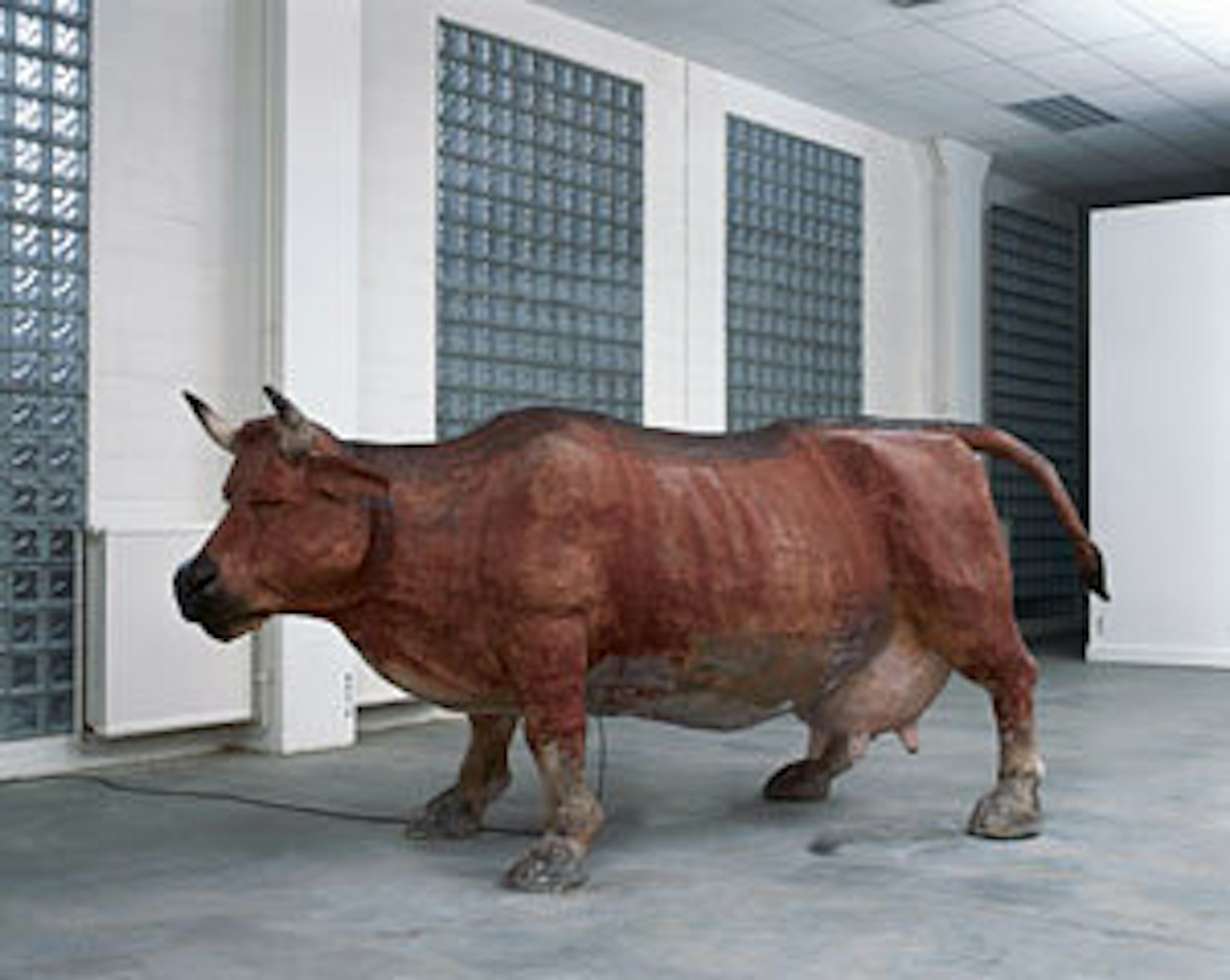Oleg Kulik has been working on the concept of 'zoophrenie' exploring the boundaries between nature and culture, human beings and animals.
In his often shocking and controversial performances, he appears as an animaul or as a creature of an indefinable kind. In SMAK the Russian artist will be presenting two works which combine sculpture and video.
When it comes to the arts, Russia has for years made hardly any impression. Decades of political oppression have strangled artistic development. In the Soviet Union, art was above all ‘Soviet Art’, intended as propaganda. Artists with a different outlook were not tolerated and were forced to work underground. There was virtually no possibility of exporting their work. It was only in the Perestroika period that they came to the surface. It seemed that the gateway to the Russian and East European art scene had been opened, but now these artists came up against the West’s unfamiliarity with the background to their culture. East European and Russian art has been familiar to SMAK for some time, however. The purchase of Ilya Kabakov’s ‘The Toilet’ (1992) (which was a focal exhibit at Documenta IX) naturally led to some upheaval at the time. Kabakov makes life-sized still-lifes that reflect on the present state of affairs in his country. Oleg Kulik belongs to a more recent generation of Russian artists. One of his pieces,
‘Deep into Russia’ has already been exhibited by the Museum Association and was also included in the presentation from the collection at Watou. Kulik also put on the performance ‘Armadillo for your show’ at the opening of the ‘Red Gate’ exhibition and also at the opening of the museum. Kulik’s work is, to put it mildly, controversial and unconventional. He denounces present-day society, which in his view is both an ethical and aesthetic failure. His core concept is that of ‘zoophreny’, or the relationship between man and the animals, between culture and nature. An anthropocentric society, which has no sympathy for any biological species other than man, does not deserve the name of democracy, according to Kulik. Counter to this, he propagates the harmony that inter-species relationships create. The ‘family of the future’ does not exclude any marriages between different biological species, on the contrary. Or, in Kulik’s own words, ‘Always together, having infinite trust in each other, the experience of a love so strong that no human can approach it - that is the moral heart of my new family.’ The prototype is his own relationship with his dog Buck. Kulik is convinced that a world in which the various biological species are each other’s equals will herald a new Renaissance, an aesthetic boom which at the present time can hardly be imagined. If man is the manager of this future world - man as the genetic engineer - and the animals its creators, the artist is its designer. In ‘Deep into Russia’, the spectator is forced to put its head into a sculpture of a cow’s rear end if he is to see the performances, in which Kulik himself adopts the form of an animal, usually a dog. According to Kulik, the situation of animals, assailed as they are by humans, resembles that of the Russian artist: he hopes for dialogue with the Western world but is not accepted as an interlocutor. As an artist he has two options in these circumstances: biting or boot-licking. It is in biting that Kulik finds the greatest authenticity, and this is therefore what he chooses. In some of his performances he astounds passers-by by biting their heels, then roars and bellows and in the end allows himself to be carried off abjectly in a police van for inappropriate canine behaviour. Two of these cows are presented in the SMAK exhibition. ‘Deep into Russia’ was purchased in 1997. The museum recently acquired ‘Blue Cow’ (1998) too. Both will be displayed in the room in the museum where until recently Kabakov’s ‘Toilet’ was. Performances by Oleg Kulik will be screened in another room.


